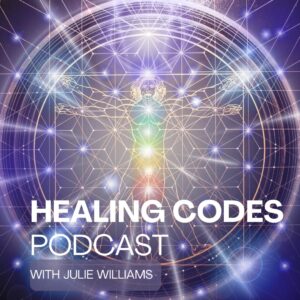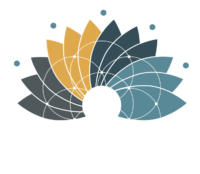
Today’s episode is the second in the Authentic Relating series where I’m guiding you to break free from your old patterning to be able to access greater authenticity, trust, confidence and compassion in every connection you have. Today we’ll be exploring how to identify your needs and the importance of being able to communicate these with yourself and others in a genuine, vulnerable, truthful and confident way. This will help you to embody authenticity in a heart-based way that will improve all your connections, personally and professionally.
Key Topics Include:
- Explore how to identify your needs and the importance of being able to communicate these with yourself and others in a genuine, vulnerable, truthful and confident way.
- Embody authenticity in a heart-based way that will improve the quality of all your connections, personally and professionally.
- Go deeper with the NVC (Non-Violent Communication) and NLP (Neuro-Linguistic Programming tools to reduce conflict and communicate consciously.
- Learn ways to not take personal responsibility for other’s feelings while being mindful of taking responsibility for our own.
- Understand the limiting beliefs that can get in the way of being vulnerable and connecting with feelings and needs.
- Hear practical examples of authentic versus non-authentic communication styles.
When you find yourself in a conflict with someone do you take the time to think about what your needs are and what the other person may be needing? If you’ve had some training in NVC (Non-Violent Communication by Marshall Rosenburg) or NLP (Neuro-Linguistic Programming) then perhaps you do and well done you! If not perhaps you find yourself so lost in emotions that all you can do is manage the flow of these emotions in a power struggle with drama, disempowerment and feeling misunderstood. Learning the skills for authentic connection will help you be able to stay more resourceful in conflict or difficult situations so that you can keep the heart connection for greater compassion, peace and truth.
In my nearly 20 years of clinical experience, getting in touch with needs is something a lot of people struggle with. Perhaps it’s the human condition, societal pressures or childhood learning but putting our needs first is often labelled as selfish and frowned upon. While I wholeheartedly support being kind to others, I also have learned (the hard way) that to be the best version of ourselves (which also allows us to care for others in the best way possible) we must put our needs first. The key to avoiding being selfish or self-centred with this is to remember to also factor in other people’s needs as well. Selfishness comes when we do not consider other’s feelings or needs. It is compassionate rather than selfish to be able to prioritise our needs while also factoring in the needs of others.
In the last blog, I talked about how NVC (Non-violent communication by Marshall Rosenburg) is a wonderful tool to help not only reduce conflict but also has a formula for authentic and compassionate communication. One of the main components of this formula is to identify the unmet need underneath feelings that are causing conflict. NVC is a wonderful tool that gives us permission to get in touch with our needs and the needs of others when our goal is authentic connection. Without getting in touch with our needs, it is very difficult to access the state of genuine, vulnerable truth that is required to be authentic in our presence, communication and connection.
NVC is required reading for all my courses as it is an easy way to understand how conflict arises with practical skills to be able to remain compassionate and connect to another person at a human level, without judgement criticism or analysis. When I teach NVC to students I find it can create an inner conflict for them as they’ve never been permitted to have needs let alone express them. This is where the NLP (Neuro-Linguistic Programming) toolbox comes in as a powerful complement to NVC, as it allows us to look more deeply and revise at the unconscious patterning that keeps us from being able to be truly authentic with ourselves and others.
In order to identify our needs the first step is to take responsibility for our feelings so that we can use them as a roadmap to access unmet needs. Taking responsibility for our feelings means to own our reactions, responses and emotions rather than projecting, blaming and expecting someone else to make us feel differently. Our feelings result from how we choose to receive what others say or do. By accepting responsibility for what we do to generate our feelings we instantly create a greater sense of self-empowerment that ignites a deeper sense of safety needed to be mature enough to name, own and choose how we feel. As soon as we place blame on others for our feeling we become disempowered and lose our ability to make our own choices for what we feel.
We also become disempowered when we take personal responsibility for other people’s feelings by internalizing negative messages from others as our fault. Encouraging others to take responsibility for their own feelings, allows us to release our need to be responsible for them. When we do this, it allows for each person to interact from a place of personal responsibility for what they think, say, do and feel. If you were raised in a co-dependent environment or were trained as a child that being a people pleaser kept you safe and loved, accessing personal responsibility for your feeling and allowing others to own theirs fully can be a challenge at first. But it is possible to let go of your old patterning and revise your belief and identity structures to habituate a healthier dynamic when connecting with others.
For example, If I put codependent energy into words it might sound like “I will do this for you and I expect you to do the same for me.” Or “I will take care of this for you and you will take care of this for me.” This is usually centred around feeling safe and loved. The limiting beliefs are therefore “I can only be loved if I know you love me” or “I can only allow myself to feel safe if you are around me.” The nature of limiting beliefs is that they are established in the first few years of life based on keeping us safe and belonging, as this is how we will survive as children who cannot raise ourselves. We also imprint our core beliefs about ourselves and the world based on our parents’ beliefs which is another safety pattern because the child needs the parents to be right to feel safe. So if your parents had limiting beliefs around needs, relationships, or connection then you will also have remnants of these limiting beliefs that you have built your own belief and identity structures on top of.
NLP allows us to revise these limiting beliefs by drawing them out of the deeper recesses of our subconscious minds so that the conscious mind can fully appreciate that they are based on a two-year-old’s perspective, and are no longer applicable to our adult experiences. When we can understand consciously that our inner 2-year-old is trying to stay safe through, for example, people pleasing or putting the needs of others before our own we can appreciate that while this may have had the desired effect when we were far less resourceful as a child it is having the opposite effect as an adult. Instead of it making us feel safe, it is causing struggle, fear and a lack of authentic connection. Take a moment now to let your inner 2-year-old know that you have successfully been alive for a few decades now, and have far more resources available to you now for safety, belonging and authentic connection. Let them know that now that you are grown, being safe is now based on knowing you have a choice over your experience and by taking responsibility for your feelings you are in touch with your truth, needs and desires. You no longer need to look to your parents to decide how to feel or react. As a conscious adult you are now able to claim full responsibility for the life you have been given and are now able to make the choices needed to stay safe, loved and nourish genuine connections.
Notice as you do this that the joy, playfulness and childlike wonder are now fully available to your inner 2-year-old as you see them skip away with joy to go off and play, freeing both of you from limiting beliefs. As this happens sense into the revision of beliefs to empowering ones such as “When I prioritise my needs I can better care for others”, and “I am safe, loved and supported in all that I do.” “I have a choice over how I feel in all situations.” “In taking responsibility for my feelings and needs I can be safe, vulnerable and connect authentically.” “Knowing my needs helps me be safe and empowered.” Breathe each of those in as you drop into your heart to integrate these empowering beliefs on all levels of being: physical, emotional, energetic, ancestral and spiritual.
Take a moment and check in with yourself on how it is to own your feelings and take responsibility for your needs. Acknowledge the empowering state of being this brings with it. With the knowing that you are the sole judge and jury and ultimate authority over all things you. And likewise for all others. Sense into the relief this brings as you set down any burden you may carry for others. And notice how you drop into a deeper embodiment of your truth and authenticity.
The truth is that when we try to take responsibility for other people’s emotions and needs we are making decisions without consulting them to see if these are true or not. When we interpret another person’s state of being the odds of us being incorrect are quite high, since we are using our personal map of reality in these interpretations. And if you have personal triggers to certain situations, that cloud your judgement then all bets are off as to the accuracy of your decision and resulting action. When we are able to stay in our own lane and allow others to stay in theirs, good communication skills become essential to be able to ask the questions needed to understand how another is feeling and what they need.
The combination of NVC and NLP’s languaging skills comes in quite handy for this. To really listen from the heart and establish rapport with whom we are speaking becomes essential to have an authentic connection. It takes some practice, but I highly recommend polishing your listening and communication skills as they are a necessary component to having meaningful interactions that remain free from drama. For example, if you are angry at a friend for not supporting you in the way you need this can easily escalate into conflict if you are not in touch with your feelings, and needs and using compassionate communication skills. Let’s say you see them and they ask for your support and you say “Sorry you weren’t there when I needed you so I am not able to support you right now.”
While this may seem like you are speaking your truth, the results will be to create confusion, hurt and defensiveness. “What do you mean I wasn’t there for you? I always drop everything when you need me!” they may reply. To which you might reply “Well last week I really needed you and you weren’t there.” They may reply “I was there, we had coffee and I listened to you talk about what was bothering you.” This conversation is a volley of blame and ambiguous phrasing that will only go in circles causing conflict, upset and frustration.
Each person is coming from their personal viewpoint that they are in the right. Rather than taking time to understand what they are feeling, and what their needs are and asking for actions to help meet those needs. Instead, they are both acting from a place of emotional charge that is being triggered by the other’ss actions. In this example, neither is being vulnerable or truly genuine in the connection. Instead, they are acting out of hurt and projecting expectations at each other. An authentic connection would then look something like this:
“I could really use your support today, as I am in conflict and I need a kind ear to listen and help brainstorm solutions. Is that something you could help me with?”
“Before I agree to this, I want to let you know that last week when I asked you for support I felt upset since I noticed you were distracted by your phone and rushed off suddenly when I was in a vulnerable place. What I needed at that moment was to be met with your full presence, or if that wasn’t possible since you had other priorities to tend to you could have let me know you were not available and we could meet another time.”
This is an example of being able to own feelings, know what the need is and make a specific request to meet that need.
“I’m sorry I wasn’t able to meet your needs then, but the school was texting me that my daughter was sick so I was distracted and had to go pick her up. I was worried at the time which distracted me from being fully present. I understand your need for my full attention when you need support and will agree to that in the future and if I cannot I will communicate what is going on for me.”
“Thank you for that, now I feel that I can be in a compassionate place to help support you to brainstorm a solution to what’s bothering you.”
In this exchange, both friends are taking responsibility for their feelings and needs while also taking into consideration the other person’s feelings and needs in a way that allows both to be compassionate for each other. Being specific with examples and suggestions is easier when the feelings and needs are understood. This allows the other person to be able to agree or negotiate the request based on what feels right for them. Remember you don’t have to agree to a request if it does not enrich your life in some way. You can adjust the request or counter with another solution that is a win-win for both. For example, to follow on from the last example friend 1 could have replied:
“I’m glad you let me know how you were feeling about last week and right now I’m feeling emotional about that as well as confused over my own dilemma, so I’d like to go for a walk to clear my head before we have the conversation I requested. Is it ok for us to meet in an hour to talk if you’re free?” To which friend 2 can reply “Yes that works for me” or if not “I have a meeting I need to prepare for, but I’ll be free later today if you want to talk then?”
I hope this blog has helped understand the importance of taking responsibility for your feelings, has empowered your ability to access your needs and has given you examples of how to use authentic communication skills to create genuine, heartfelt connections. Next week I’ll continue with the authentic connection series so tune in here to continue this journey into truth, empowerment and authentic connection.
Interested in learning more about NLP? I have an eBook that can help. Check it out here: https://consciousness-medicine.com/product/holistic-nlp-ebook/
Want to learn how to practice Consciousness Medicine and Family Constellations? My next training course begins in April 2024. More information here: https://consciousness-medicine.com/product/family-constellation-consciounsess-medicine-foundations-course/
_____________
Find out more about Consciousness Medicine.
Upcoming courses, workshops and 1:1 sessions.
Sign up for my free e-newsletter from the homepage www.consciousness-medicine.com.
Stay Connected on Social Media:
Facebook: www.facebook.com/CentreforConsciousnessMedicine
Instagram: www.instagram.com/wellnesswisdomwithjulie
Linked In: www.linkedin.com/in/julie-williams-cxmed


